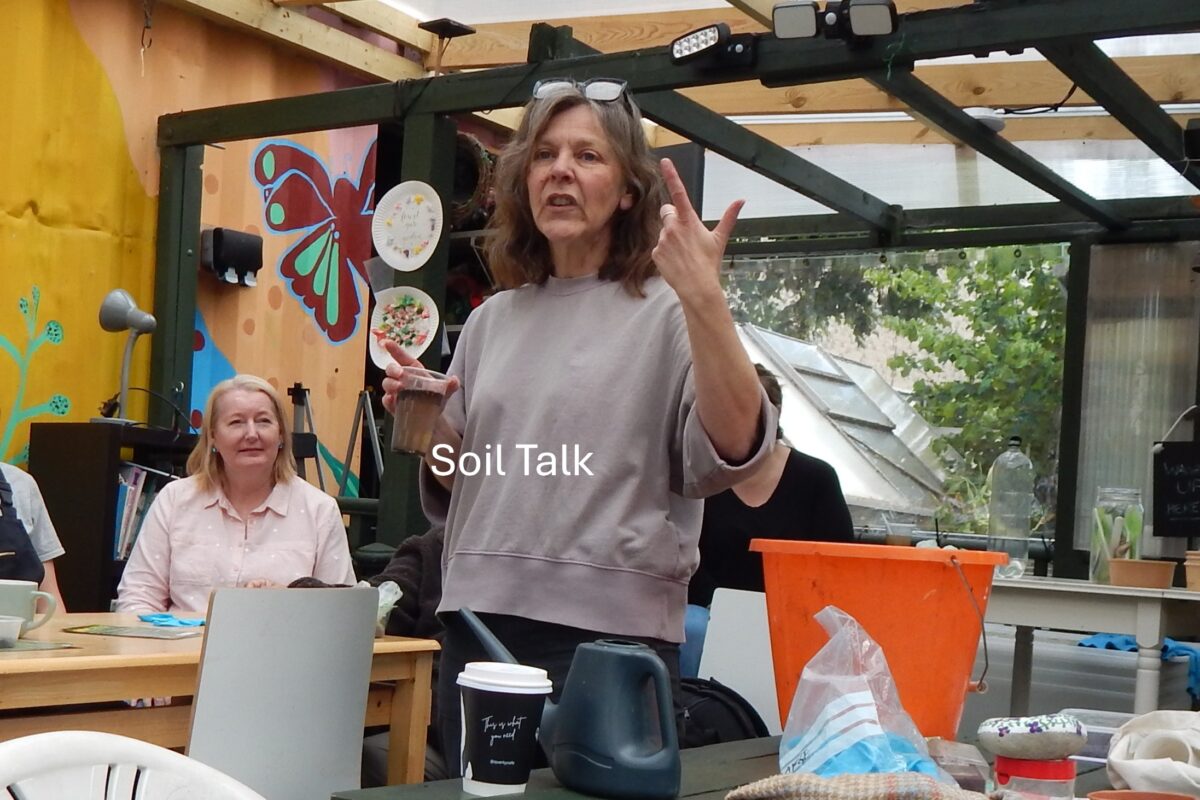Kate Spencer was the second speaker in our fortnightly series of Sunday afternoon talks. About forty attended. Kate is a professor at Queen Mary college. Her research is in pollution. She lives on Earlham Grove and has been a friend of the garden since its beginning.
Most of the audience had brought along a little of their garden soil. They were told to put half a teaspoon in a clear plastic cup, which was filled up with water. Then stirred and allowed to settle for a minute or so. The sediment at the bottom was gritty. This was the mineral component of the soil. Floating on top was the organic component (the humus) originating from plant and animal matter broken down by soil organisms. The murky layer in between consists of fine mineral particles, which will slowly settle. Sand settles quickly, while clay soils have much more fine particles in the mineral element.
Compost has no mineral content unless it is added in such mediums as John Innes composts. I note the term compost is used very loosely. Sometimes for rotted vegetable matter but also for growing mediums like John Innes.
The organic component in soil assists in keeping it light and aerated, allowing air and water (and its dissolved nutrients) to get to roots. Sand is inactive, holding onto little nutrient material and losing water quickly. While clay soils retain nutrients, lose water more slowly, but are heavy to work. The more compost you can add to them the better, to get air in and make them easier to work. In general, there is 10 to 15% organic material in soil.
The mineral element of soil is made from the underlying rock, which is broken down by rain, ice and snow over millions of years to small particles. Our local soil is composed of River Thames sediment. At the surface plant and animal matter rots down. These are mixed with the mineral elements by earthworms, bugs and microbes. Water flowing down carries nutrients; though the topsoil contains most, and the subsoil close to the bedrock is almost barren.
The pH of the soils, brought in by attendees, was measured. The pH is a measure of the hydrogen ion concentration. It controls the uptake of nutrients by plants. The main nutrients are nitrogen, potassium and phosphorus, but also trace elements such as iron and magnesium, the latter necessary for chlorophyll. Plants low in this element will have yellow leaves.
Kate borrowed a pH meter from her college. Soil was mixed with deionised water and tested, though distilled water could be used. We also had two cheap pH testers. One was useless. I wondered whether the battery had gone. The other worked but was less accurate than the college machine. In general the gardens in the area have pH 6.5 to 7.5.
We finished the session with tea and biscuits. And thanked Kate for a stimulating session on soil. Our gardens and food crops are utterly dependent on it.
Our next session for these Sunday sessions is on June 8th when I will take attendees round the garden explaining the science of the compost heap, of our sycamore tree and its part in creating the air we breathe, and explain why the shelter is warmer inside than it is outside.

